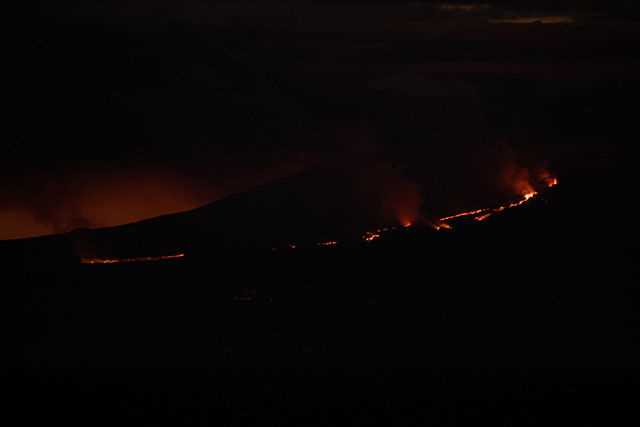What comes to mind when you think about the Galapagos Islands? Is it the image of gigantic tortoises roaming over fresh lava flows? On Tuesday, those aboard National Geographic Endeavour II had the chance to live the dream. We witnessed the origin of islands, and we saw how life evolves as dozens of tortoises moved around the island.
Galapagos is an archipelago isolated from the rest of the world by the vast hugeness of the Pacific Ocean. Why did this group of islands appear so far from any other piece of land? More than 120 rocks, islets and islands that never attached to any continent! The answer: these are oceanic islands, formed by the action of a hotspot underneath a moving plate, the Nazca Plate. The hot spot is located beneath the western islands; therefore, the western realm is where we encounter the youngest volcanoes. As we started our week on the easternmost islands of San Cristobal and Española, we saw the older volcanoes.
As soon as we learned that Wolf Volcano was active, we changed our itinerary. We left behind the four to one million-year-old islands and sailed 90 nautical miles to reach the northern part of Isabela. Wolf is the island’s highest volcano, 1.710 meters high. It is one of the six volcanoes that give Isabela its seahorse shape.
We arrived in the vicinity of Cape Marshall at 9:00 PM, with Cassiopeia constellation clear in the skies, reminding us where to find north. The moon competed in brightness with Sirius, but never with the red majestic glow coming from the active fissure of Wolf.
Within hours today, we have traveled in time, from the oldest islands inhabited by giant tortoises to the very beginning, to the origin. Isn’t this what comes to mind when you think about the Galapagos? Giant tortoises and active volcanoes.







